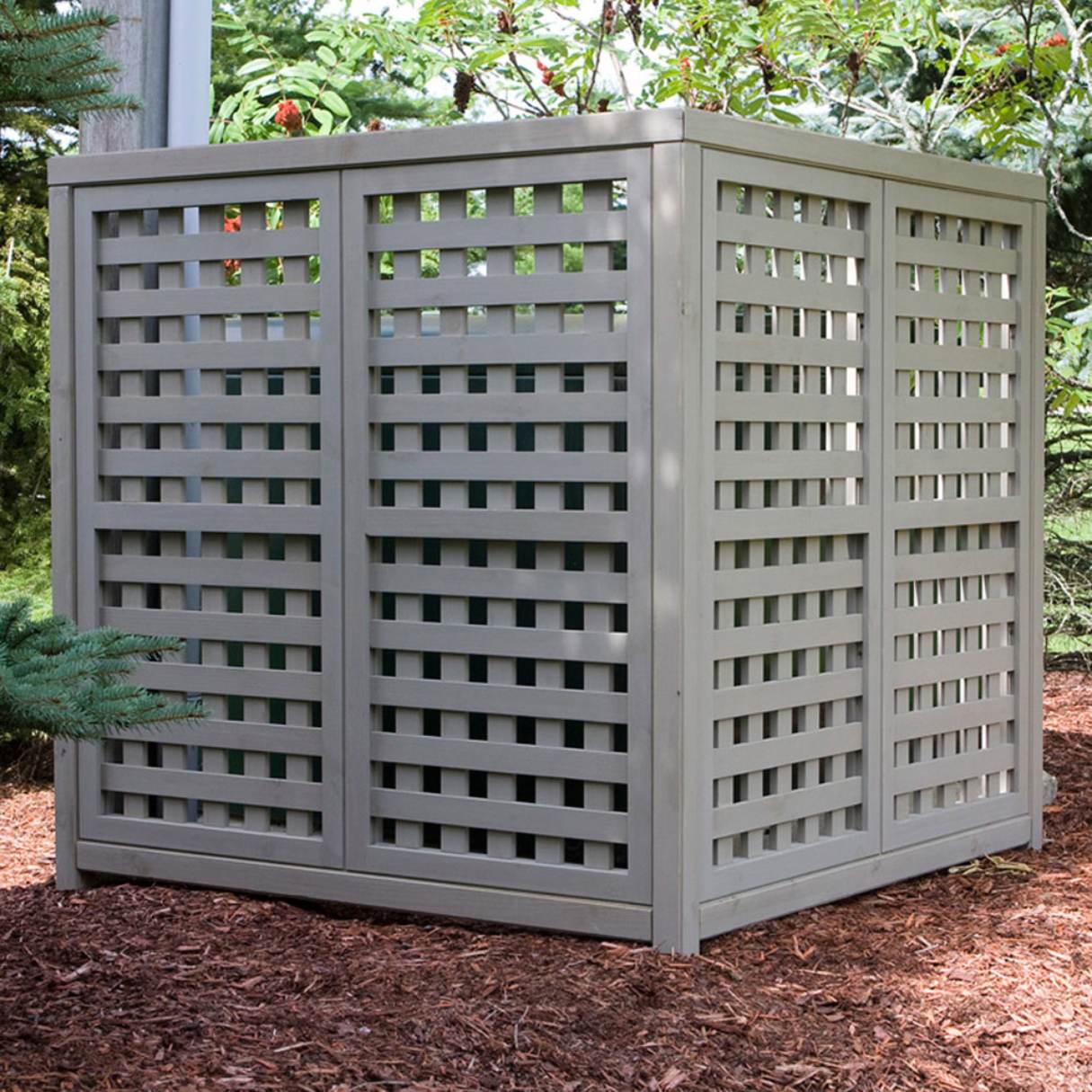

Articles
How To Hide HVAC Unit Outside
Modified: February 29, 2024
Learn how to hide your HVAC unit outside with these helpful articles. Find tips and ideas to blend it seamlessly into your outdoor space for a more aesthetically pleasing look.
(Many of the links in this article redirect to a specific reviewed product. Your purchase of these products through affiliate links helps to generate commission for Storables.com, at no extra cost. Learn more)
Introduction
When it comes to the functionality and appearance of your home, the HVAC (Heating, Ventilation, and Air Conditioning) unit plays a crucial role. However, the outdoor unit of your HVAC system may not always blend seamlessly with your overall aesthetic vision for your property. The good news is that there are ways to hide your HVAC unit outside while still keeping it accessible for maintenance and airflow.
In this article, we will explore the benefits of hiding HVAC units, along with factors to consider before tackling this project. We will also delve into various options for hiding HVAC units and offer tips for placement, safety, and maintenance. By the end of this article, you’ll have a clear understanding of how to conceal your HVAC unit without compromising its performance.
Key Takeaways:
- Enhance your outdoor space by concealing your HVAC unit with landscaping, fencing, custom enclosures, built-in structures, or creative camouflage techniques. Prioritize accessibility, airflow, and safety for a visually appealing and functional outcome.
- Hiding your HVAC unit outside offers benefits such as improved curb appeal, increased property value, enhanced privacy, and protection from the elements. Consider factors like accessibility, airflow, and local regulations for a successful concealment project.
Read more: How To Hide An Extension Cord Outside
Benefits of Hiding HVAC Units
While the outdoor HVAC unit is an essential component of your home’s heating and cooling system, it can be an eyesore that detracts from the overall aesthetics of your property. Hiding your HVAC unit can bring numerous benefits, both in terms of appearance and functionality. Here are some key advantages of concealing your HVAC unit:
- Improved Curb Appeal: One of the major benefits of hiding your HVAC unit is the enhancement of your home’s curb appeal. By effectively disguising the unit, you can create a more visually appealing and cohesive exterior.
- Increased Property Value: Concealing your HVAC unit can also add value to your property. Potential buyers will appreciate a well-maintained and aesthetically pleasing outdoor space, which may ultimately result in a higher selling price if you decide to put your home on the market.
- Enhanced Privacy: Hiding your HVAC unit can provide an additional level of privacy for your property. By obstructing the unit from view, you can create a more secluded and tranquil outdoor environment.
- Protection from the Elements: Exposing your HVAC unit to harsh weather conditions can lead to premature wear and damage. By concealing it, you can shield it from direct sunlight, rain, snow, and other elements, ultimately prolonging its lifespan.
- Noise Reduction: HVAC units can produce significant noise, especially when they need to work harder during extreme weather conditions. Concealing the unit can help muffle the noise and create a quieter outdoor space for you and your neighbors.
Overall, hiding your HVAC unit offers a range of benefits, from improving the aesthetic appeal of your property to protecting the unit from weather-related damage. By exploring various options for concealing the unit, you can create a more visually pleasing and functional outdoor space.
Factors to Consider Before Hiding HVAC Units
Before you embark on the task of hiding your HVAC unit outside, there are several factors you should carefully consider. These factors will help ensure that the concealment methods you choose are practical, effective, and compliant with safety regulations. Here are some key factors to keep in mind:
- Accessibility: It is essential to maintain easy access to your HVAC unit for regular maintenance and repairs. When planning your concealment strategy, make sure to incorporate features that allow convenient access to the unit without compromising its functionality.
- Airflow: Proper airflow is crucial for the efficient operation of your HVAC unit. When hiding the unit, ensure that the chosen method does not obstruct the airflow intake or exhaust. This will prevent potential performance issues and ensure that your HVAC system operates optimally.
- Local Regulations: Before implementing any concealment methods, familiarize yourself with the local regulations and restrictions. Certain jurisdictions may have specific guidelines regarding the placement, height, and appearance of outdoor HVAC units. Be sure to comply with these regulations to avoid any legal issues.
- Compatibility: Consider the compatibility of your concealment approach with your existing landscaping and outdoor design. Aim for a solution that seamlessly integrates with the overall look of your property, creating a cohesive and attractive outdoor space.
- Budget: Determine your budget before deciding on a concealment method. Some options, such as custom enclosures or built-in structures, may require a larger investment. Consider the cost of materials, labor, and maintenance when evaluating your options.
- Maintenance: Concealing your HVAC unit should not hinder its regular maintenance. Choose a method that allows for easy access to the unit’s components, making it convenient for technicians to service and clean the unit as needed.
- Climate: Take into account the climate in your region when selecting a concealment method. Ensure that the materials and techniques used can withstand the weather conditions and do not impede the airflow required for proper cooling and heating.
Considering these factors will help you make informed decisions when choosing the best approach to hide your HVAC unit. By taking into account accessibility, airflow, regulations, compatibility, budget, maintenance, and climate, you can ensure that your concealment efforts are successful and beneficial in the long run.
Landscaping Options
One of the most popular and effective ways to hide your HVAC unit is by incorporating it into your landscaping design. With carefully selected plants, structures, and features, you can seamlessly blend the unit into your outdoor space. Here are some landscaping options to consider:
- Strategic Planting: Use plants to create a natural barrier around your HVAC unit. Choose plants that are tall and dense, such as shrubs, bushes, or tall grasses. Position them strategically to provide coverage while still allowing airflow to the unit. Be mindful of the plants’ growth patterns, ensuring they don’t obstruct access or impede the unit’s performance.
- Vertical Gardens: Vertical gardens are becoming increasingly popular as a way to conceal outdoor units. These gardens consist of vertical planters or trellises attached to a wall or fence. By mounting these structures around your HVAC unit, you can create a green wall that hides the unit and adds a touch of natural beauty to your outdoor space.
- Creating an Attractive Barrier: Consider using decorative fencing or lattice panels to create a visually appealing barrier around your HVAC unit. Choose materials and designs that complement your existing outdoor aesthetics. Paint the panels or add climbing plants to further enhance the appeal and blend them into the surroundings.
- Birdbaths or Water Features: Incorporating birdbaths or water features near your HVAC unit can divert attention away from it. The sound and movement of water can draw the eye and provide a focal point that effectively conceals the unit.
- Rock Gardens: Another option is to create a rock garden around your HVAC unit. Use a variety of rocks, pebbles, and boulders to create an attractive and low-maintenance feature. Properly arranged rocks can effectively hide the unit while adding texture and visual interest to your landscape.
- Garden Structures: Consider adding garden structures, such as pergolas or arbors, near your HVAC unit. These structures can serve as both a decorative element and a way to conceal the unit. Train climbing vines or plants to grow on these structures, further enhancing the camouflage effect.
When using landscaping to hide your HVAC unit, remember to leave enough clearance for proper airflow and easy access for maintenance. Regularly trim and maintain plants to prevent them from obstructing the unit or impeding its performance. With careful planning and design, landscaping can be an effective and visually appealing way to conceal your HVAC unit.
Fencing and Screens
Another popular option for hiding your HVAC unit outside is to utilize fencing and screens. These methods provide more structured and deliberate concealment while offering flexibility in terms of design and materials. Here are some fencing and screen options to consider:
- Lattice Screens: Lattice screens are attractive and versatile options for hiding your HVAC unit. They provide partial coverage while allowing for adequate airflow. Choose a lattice design that complements your outdoor aesthetic and consider adding climbing plants for added visual appeal and natural camouflage.
- Slat Fencing: Slat fencing is an effective way to block the view of your HVAC unit while adding a modern touch to your outdoor space. The slats can be arranged horizontally or vertically, depending on the desired aesthetic. Coordinate the color and style of the slat fencing with your existing exterior design to create a cohesive look.
- Bamboo Screens: Bamboo screens are a popular choice for concealing various outdoor elements. They provide a natural and tropical look and are known for their durability. Bamboo screens can be easily installed around your HVAC unit, offering sufficient coverage while allowing airflow to pass through.
- Decorative Metal Panels: Decorative metal panels add a touch of elegance to your outdoor space while effectively concealing your HVAC unit. Look for intricate designs that blend with your existing decor. These panels can be customized to the desired size and shape, providing a stylish and durable solution for hiding the unit.
- Trellis Panels: Trellis panels are a versatile option for creating privacy and concealing your HVAC unit. They can be positioned directly around the unit or used as dividers to section off a specific area. Trellis panels also provide support for climbing plants, further enhancing the camouflage effect.
- Living Screens: Living screens, often referred to as “green walls” or “vertical gardens,” are an excellent way to hide your HVAC unit while adding a lush and vibrant touch to your outdoor space. These screens consist of plants grown vertically in wall-mounted containers or modular systems. Choose plants that thrive in your climate and consider using a mix of foliage, flowers, and trailing plants for added visual interest.
When using fencing or screens to hide your HVAC unit, ensure that the chosen materials are weather-resistant and can withstand the elements. Also, consider the dimensions and placement of the fencing or screens to allow for easy access and maintenance. With the right choice of fencing or screens, you can effectively conceal your HVAC unit while adding style and privacy to your outdoor area.
Read more: How To Hide Outside Electrical Box
Custom Enclosures
If you’re looking for a more permanent and custom solution to hide your HVAC unit outside, consider building a custom enclosure. Custom enclosures are specifically designed to match your outdoor aesthetics while effectively concealing the unit. Here are some options to consider when building a custom enclosure:
- Wooden Enclosures: Wood is a popular choice for custom enclosures due to its natural appeal and versatility. You can build a wooden enclosure that reflects the style of your home and surrounding landscape. Consider using materials such as cedar or redwood, which are naturally resistant to rot and decay. Ensure that the enclosure has proper ventilation to maintain airflow around the unit.
- Brick or Stone Enclosures: If you prefer a more robust and permanent solution, consider using brick or stone to construct an enclosure. These materials offer durability and can be designed to match the architectural style of your home. Work with a professional mason to ensure proper construction and ventilation to ensure the longevity and functionality of the enclosure.
- Metal Enclosures: Metal enclosures provide a sleek and modern look while offering durability and protection for your HVAC unit. Materials such as aluminum or steel can be used to construct an enclosure that is both aesthetically pleasing and weather-resistant. Ensure adequate ventilation and consider the use of louvers or perforated panels to promote airflow.
- Fabricated Enclosures: Fabricated enclosures are another option that allows for flexibility in design and construction. These enclosures are typically made from pre-fabricated sections, which can be customized and assembled on-site. They offer a cost-effective solution and can be designed to match your desired aesthetic.
- Combination Enclosures: In some cases, a combination of materials can be used to build an enclosure. For example, you can combine wood and metal to create a modern and visually appealing enclosure. Explore different combinations to find a solution that best suits your style and preferences.
- Professional Assistance: Building a custom enclosure may require specialized skills and knowledge. Consider enlisting the help of professionals, such as carpenters, masons, or metalworkers, to ensure a high-quality and structurally sound enclosure. They can provide guidance on design considerations, materials, and proper construction techniques.
When building a custom enclosure, ensure that it complies with local regulations and allows for proper access for maintenance and repairs. It is also essential to consider the impact of the enclosure on the HVAC unit’s performance, ensuring adequate airflow and ventilation. With a well-designed and expertly constructed custom enclosure, you can effectively hide your HVAC unit while enhancing the overall appearance of your outdoor space.
Consider using a lattice or fence to create a screen around the HVAC unit. Make sure to leave enough space for proper airflow and easy access for maintenance.
Built-in Structures
If you’re looking for a more integrated and seamless approach to hide your HVAC unit, consider incorporating it into a built-in structure. Built-in structures can provide functional and aesthetic solutions for concealing the unit while blending it into your outdoor space. Here are some options to consider:
- Pergolas or Gazebos: Pergolas or gazebos can serve as stylish and functional structures to hide your HVAC unit. By incorporating the unit into the design, you can create a dedicated space that seamlessly integrates with your outdoor environment. Use materials and finishes that match your existing outdoor structures to ensure a cohesive look.
- Cabinets or Cupboards: Installing cabinets or cupboards around your HVAC unit offers a discreet and convenient way to conceal it. These storage units can be custom-built to fit the specific dimensions of the unit and blend with your outdoor decor. Ensure that the cabinets or cupboards have proper ventilation to maintain the unit’s performance.
- Outdoor Kitchens or Bars: Incorporating your HVAC unit into an outdoor kitchen or bar area can serve a dual purpose. The unit can be concealed within the structure, providing functionality while also contributing to the overall ambiance of your outdoor entertaining space. Consult with professionals to ensure that the structure includes proper ventilation and access for maintenance.
- Bench or Seating Area: Building a bench or seating area around your HVAC unit is a creative way to hide it while creating a functional space in your outdoor area. Use materials that match your existing outdoor furniture and consider incorporating cushions or pillows for added comfort and style.
- Vertical Storage Units: Vertical storage units provide an efficient and space-saving solution for hiding your HVAC unit. These units can be designed with compartments or shelves to store gardening tools, supplies, or other outdoor items, while also effectively concealing the unit.
- Retractable Screens or Curtains: If you prefer a more flexible and easily adjustable option, consider using retractable screens or curtains to conceal your HVAC unit. These screens can be installed on tracks or rods to create a barrier when needed, and can be drawn back to reveal the unit when access or maintenance is required.
When incorporating your HVAC unit into a built-in structure, consider the materials, design, and functionality. Ensure proper ventilation, accessibility for maintenance, and compliance with local regulations. By seamlessly integrating the unit into a built-in structure, you can transform it into a functional and visually pleasing part of your outdoor space.
Camouflage Techniques
If you prefer a more creative and artistic approach to hide your HVAC unit, consider using camouflage techniques. These techniques involve incorporating elements that mimic the surrounding environment and help the unit blend seamlessly into its surroundings. Here are some camouflage techniques to consider:
- Mural or Trompe-l’oeil: Transform your HVAC unit into a work of art by painting a mural or using trompe-l’oeil techniques. Hire a professional artist to create an image that matches the surrounding landscape, such as a garden scene or a natural backdrop. This technique not only conceals the unit but also adds aesthetic value to your outdoor space.
- Vinyl Wraps or Decals: Vinyl wraps or decals can be an easy and cost-effective way to camouflage your HVAC unit. These wraps are available in various designs, such as foliage, brickwork, or natural landscapes. Choose a design that matches your outdoor aesthetic and apply it directly onto the unit for instant camouflage.
- Outdoor Art Installations: Incorporate outdoor art installations near your HVAC unit to distract attention from it. Sculptures, statues, or decorative features can be strategically placed to draw the eye away from the unit while adding visual interest to your outdoor space.
- Natural Coverings: Use natural materials to cover and hide your HVAC unit. This can involve placing a trellis or garden netting around the unit and allowing climbing plants to grow and cover it. Alternatively, you can use bushes or shrubs to create a natural camouflage that blends with the surrounding landscape.
- Camouflage Netting: Camouflage netting, commonly used in outdoor settings, can effectively hide your HVAC unit. The netting is available in various patterns and colors, allowing you to select one that matches your outdoor environment. Simply drape the netting over the unit, ensuring you allow for proper airflow and access for maintenance purposes.
- Disguise with Outdoor Furniture: Strategically place outdoor furniture, such as benches, chairs, or tables, around your HVAC unit to create a distraction. Choose furniture that complements your outdoor decor and arrange it in a way that diverts attention away from the unit.
When employing camouflage techniques, ensure that the chosen method does not obstruct airflow or hinder access for maintenance purposes. Regularly maintain and update the camouflage elements to ensure they remain effective and visually appealing. With these techniques, you can turn your HVAC unit into a seamless part of your outdoor space, blending it effortlessly into its surroundings.
Placement and Orientation Considerations
Proper placement and orientation of your HVAC unit play a vital role in both its functionality and concealment. By considering these factors, you can ensure that the unit is effectively hidden while optimizing its performance. Here are some placement and orientation considerations to keep in mind:
- Clearance and Accessibility: Ensure that there is adequate clearance around the HVAC unit for proper airflow and maintenance. Consult the manufacturer’s guidelines for the recommended clearance distances. Also, consider convenient access for technicians to service and repair the unit when needed.
- Distance from Structures: When positioning your HVAC unit, maintain a sufficient distance from structures such as walls, fences, or trees. This ensures proper ventilation and prevents potential damage from contact or obstruction.
- Visual Obstructions: Consider the line of sight when determining the location of your HVAC unit. Place it strategically to minimize the view from key areas in your outdoor space, such as sitting areas, dining spaces, or windows. Consider utilizing existing structures or landscaping elements to create visual barriers.
- Shielding from Direct Sunlight: Excessive exposure to direct sunlight can negatively impact the performance and efficiency of your HVAC unit. Position the unit in a location that provides some shade during peak sun hours, such as under a tree or near a building’s shadow.
- Orientation for Airflow: Ensure that the HVAC unit is oriented in a way that facilitates proper airflow. Follow the manufacturer’s recommendations for the correct orientation of the intake and exhaust vents. Proper airflow is essential for the unit to function optimally and maintain its efficiency.
- Noise Considerations: Take into account the noise generated by your HVAC unit and its impact on your outdoor living space. Position the unit in a location that minimizes the noise disturbance for you and your neighbors. Consider using noise-reducing techniques, such as adding sound barriers or insulation materials, to mitigate noise levels.
- Integration with Landscape: Integrate your HVAC unit into your existing landscape design to create a cohesive and harmonious outdoor space. Consider its placement in relation to other outdoor elements, such as plants, patios, or pathways. Aim for a seamless blend between the unit and its surroundings.
By carefully considering the placement and orientation of your HVAC unit, you can ensure that it is effectively hidden while maintaining its functionality. Take into account clearance, distance from structures, visual obstructions, direct sunlight, airflow orientation, noise considerations, and integration with the landscape to create an aesthetically pleasing and well-performing outdoor HVAC unit.
Read more: How To Hide AC Unit
Safety and Maintenance Considerations
When hiding your HVAC unit outside, it is important to prioritize safety and maintenance to ensure that the unit operates efficiently and remains accessible for routine upkeep. Here are some safety and maintenance considerations to keep in mind:
- Ventilation: Proper ventilation is crucial for the optimal performance of your HVAC unit. Ensure that any concealment techniques or structures used allow for sufficient airflow around the unit. Restricted airflow can lead to reduced efficiency and potential damage to the system.
- Access for Maintenance: Create a design that allows for easy access to the HVAC unit for routine maintenance and repairs. Consider removable panels, hinged doors, or other access points that provide technicians with convenient entry to the unit’s components while maintaining its concealment.
- Clear Pathways: Keep the area around the HVAC unit clear of any obstructions to ensure safe and efficient maintenance access. Remove any landscaping features or objects that could impede the path of technicians working on the unit.
- Protection from Weather: Take measures to protect your HVAC unit from harsh weather conditions. Ensure that any concealment structures or methods used offer adequate shielding from rain, snow, and direct sunlight. Consider weather-resistant materials, proper sealing, and regular inspections to prevent weather-related damage.
- Secure Anchoring: If your concealment involves structures, ensure that they are securely anchored to the ground. This will prevent them from being displaced or damaged by strong winds or other weather events, ensuring the safety of both the unit and your outdoor space.
- Regular Cleaning: Keep the hidden HVAC unit clean to prevent dust, dirt, and debris buildup, which can impede its performance. Regularly inspect and clean the surrounding area, including the concealment structures, to maintain optimal airflow and ensure the unit’s functionality.
- Inspect for Damage: Routinely inspect the concealed HVAC unit for any signs of damage, such as loose parts, leaks, or worn-out components. Promptly address and repair any issues to prevent further damage and maintain the unit’s efficiency.
- Comply with Local Regulations: Ensure that your concealment methods and structures comply with the local regulations and restrictions in your area. Familiarize yourself with any specific guidelines relating to outdoor HVAC units, including placement, height limitations, and aesthetic requirements.
By adhering to safety practices and implementing regular maintenance routines, you can ensure the longevity and optimal performance of your HVAC unit. Prioritize proper ventilation, accessible pathways, weather protection, secure anchoring, cleaning, damage inspections, and compliance with local regulations. These considerations will help maintain the efficiency and safety of your concealed HVAC unit, allowing you to enjoy a comfortable and visually pleasing outdoor space.
Conclusion
Hiding your HVAC unit outside is a practical and aesthetic solution to enhance the overall appeal of your outdoor space. By employing various concealment methods, you can effectively disguise the unit while maintaining its functionality and accessibility for maintenance. Throughout this article, we have explored different options for hiding HVAC units, including landscaping, fencing and screens, custom enclosures, built-in structures, camouflage techniques, and placement considerations.
Landscaping offers a natural and visually appealing way to conceal your HVAC unit by strategically placing plants or creating vertical gardens. Fencing and screens provide structured concealment while adding a decorative touch to your outdoor space. Custom enclosures offer a permanent and personalized solution, blending seamlessly with your outdoor aesthetics. Built-in structures, such as pergolas or cabinets, integrate your HVAC unit into functional elements of your outdoor area. Camouflage techniques use artistry and creative designs to hide the unit discreetly. Placement and orientation considerations ensure proper airflow and accessibility. Lastly, safety and maintenance considerations prioritize the unit’s performance and longevity.
When implementing any concealment method, it is important to consider factors such as accessibility, airflow, local regulations, compatibility, budget, maintenance, and climate. These factors will help you choose the most suitable option for your specific needs and ensure a successful outcome.
By hiding your HVAC unit outside, you can improve your home’s curb appeal, increase property value, enhance privacy, protect the unit from the elements, and reduce noise. With careful planning and attention to detail, you can transform your outdoor space into an aesthetically pleasing and functional area while effectively concealing your HVAC unit.
Remember to regularly inspect and maintain the concealed unit, prioritize ventilation, and comply with safety regulations. By following these guidelines, you can enjoy the benefits of a hidden HVAC unit for years to come.
Frequently Asked Questions about How To Hide HVAC Unit Outside
Was this page helpful?
At Storables.com, we guarantee accurate and reliable information. Our content, validated by Expert Board Contributors, is crafted following stringent Editorial Policies. We're committed to providing you with well-researched, expert-backed insights for all your informational needs.
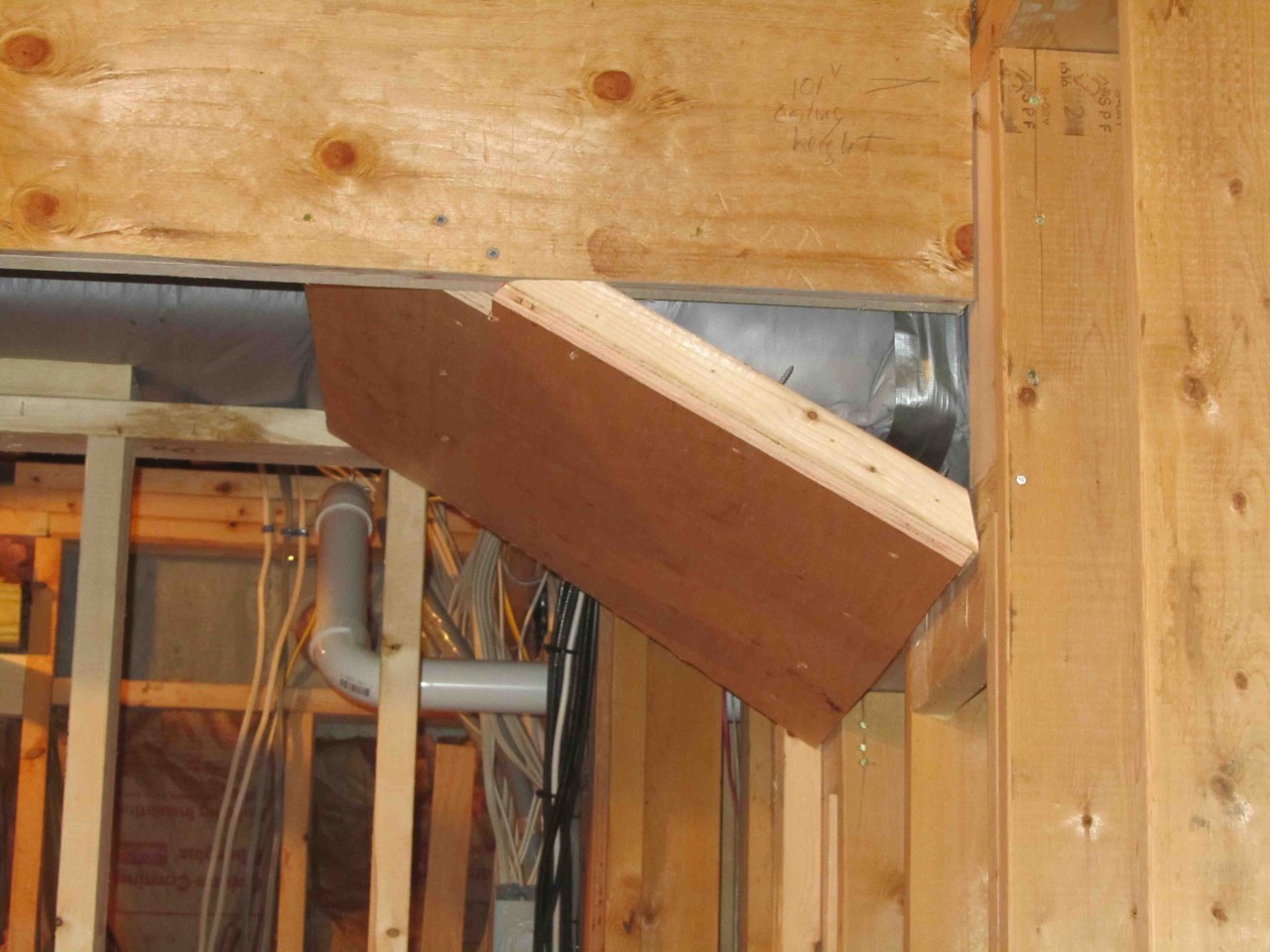
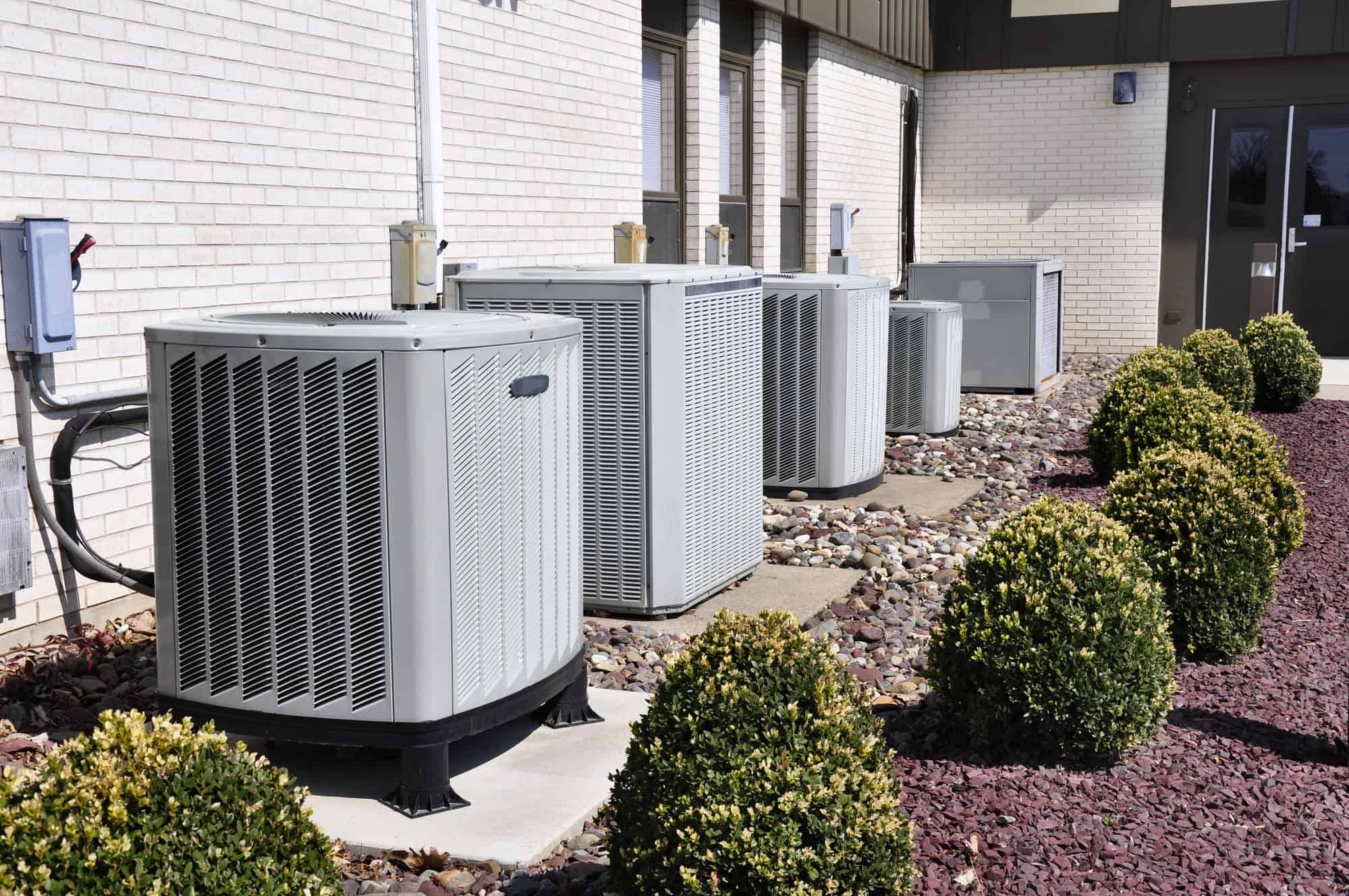
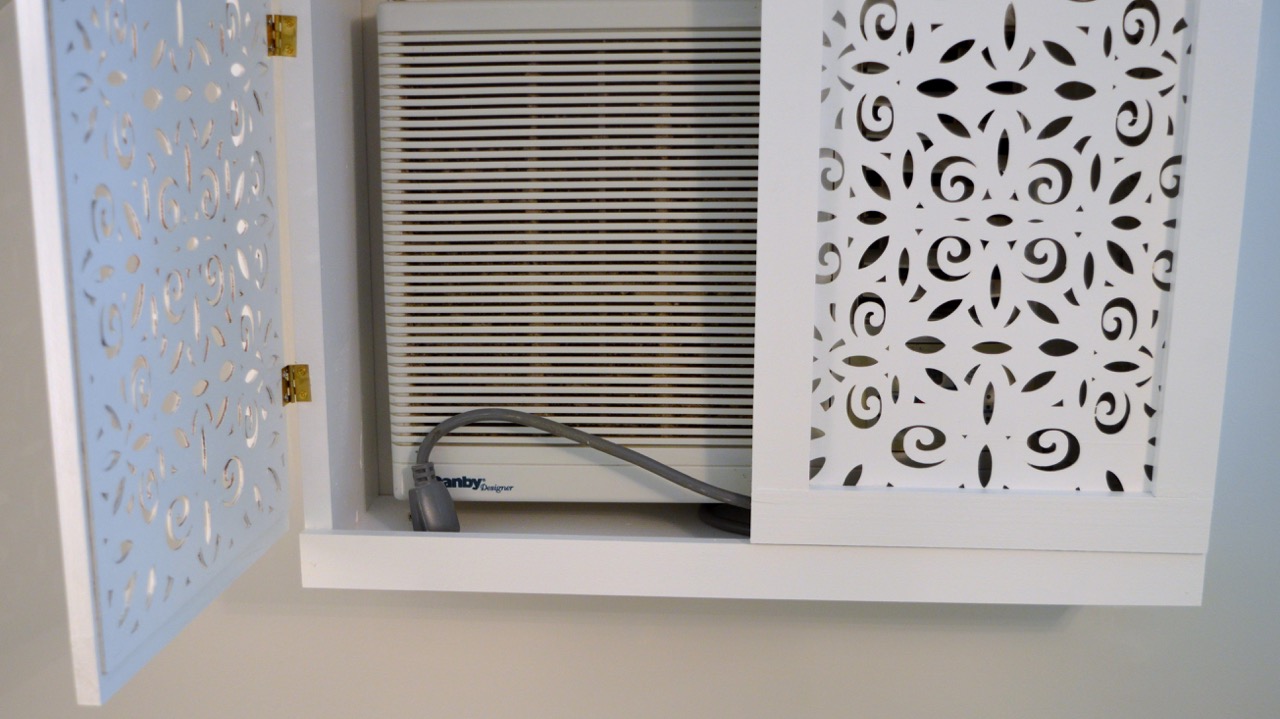
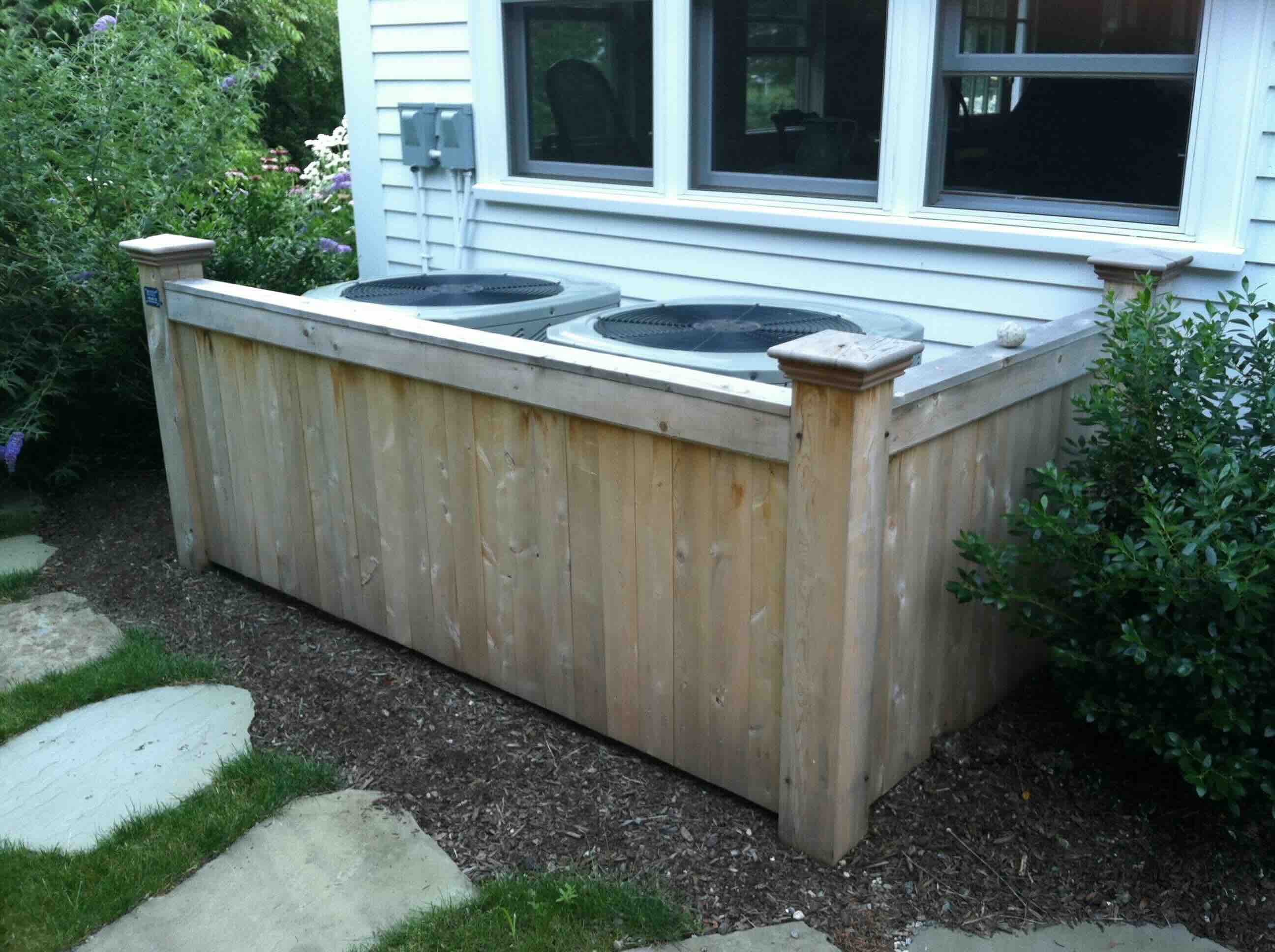
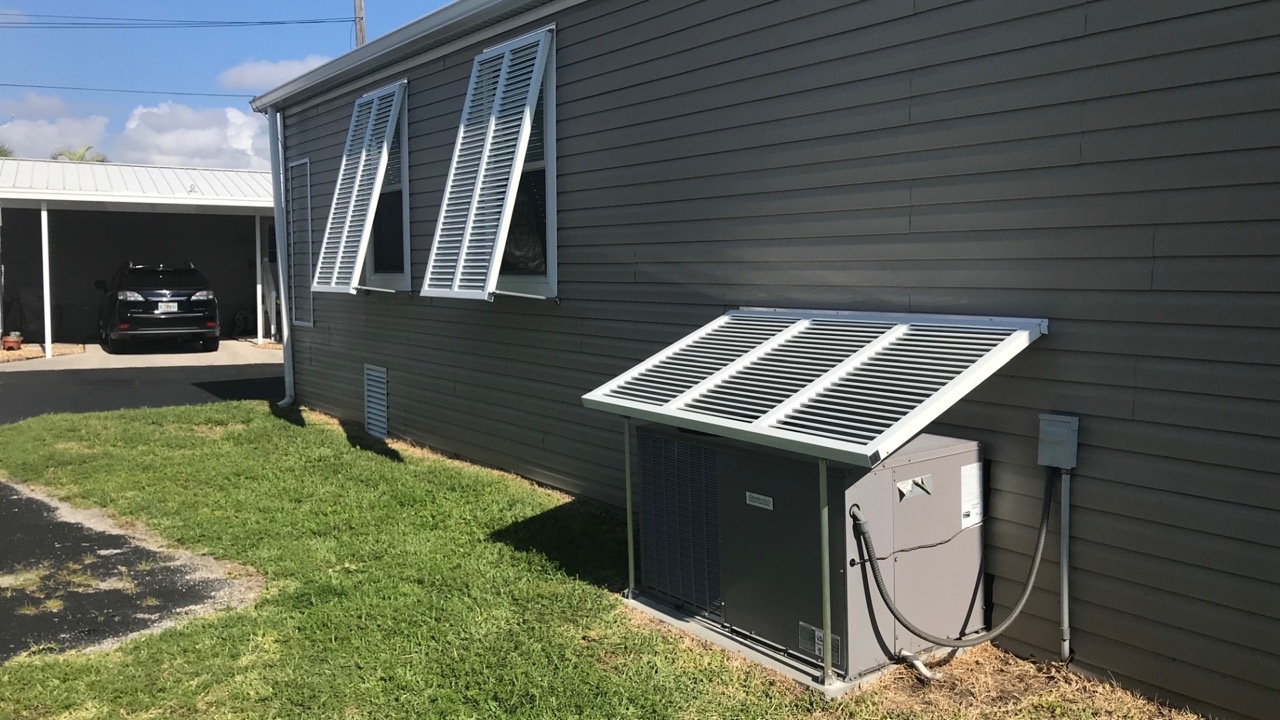
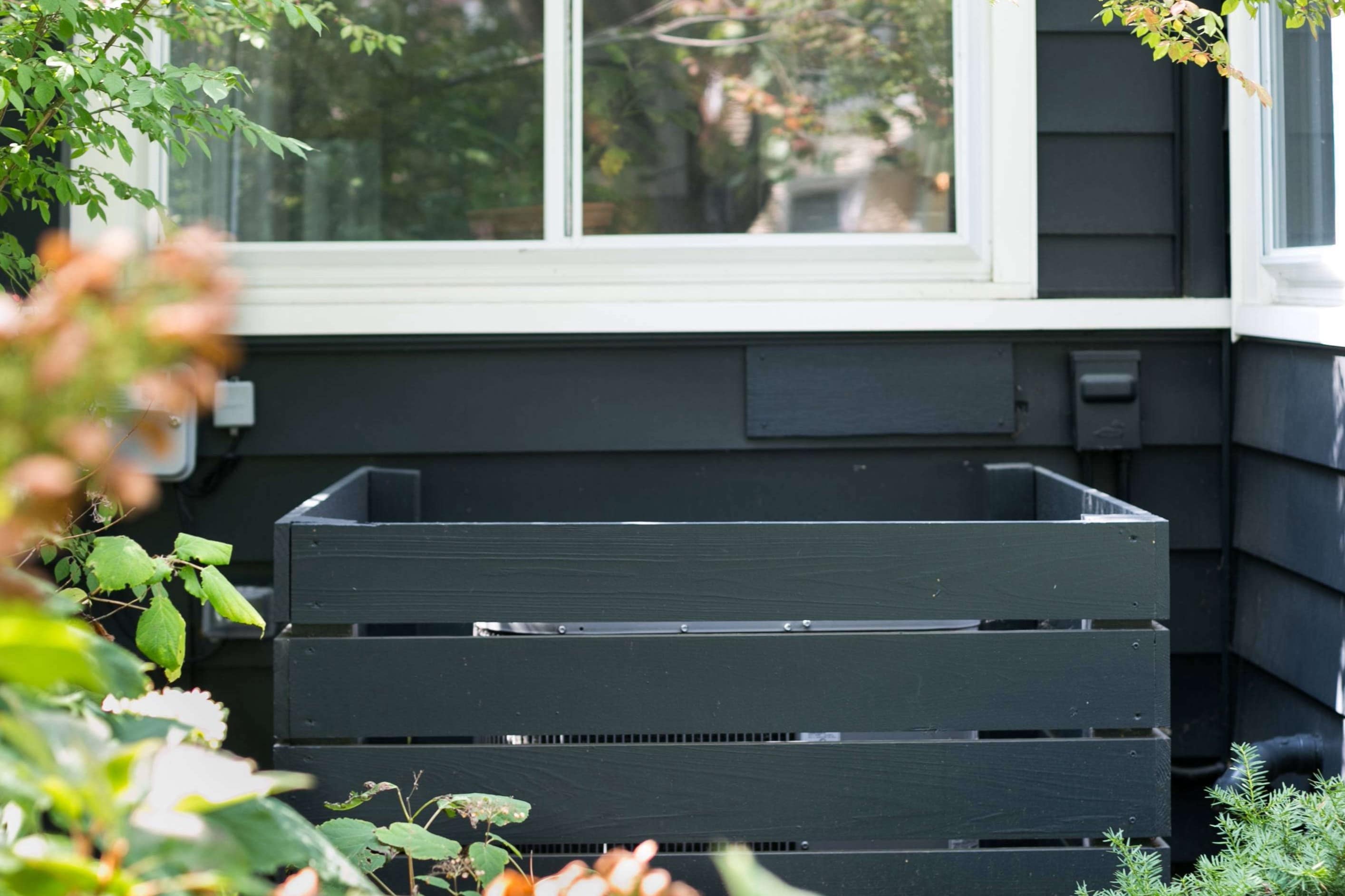
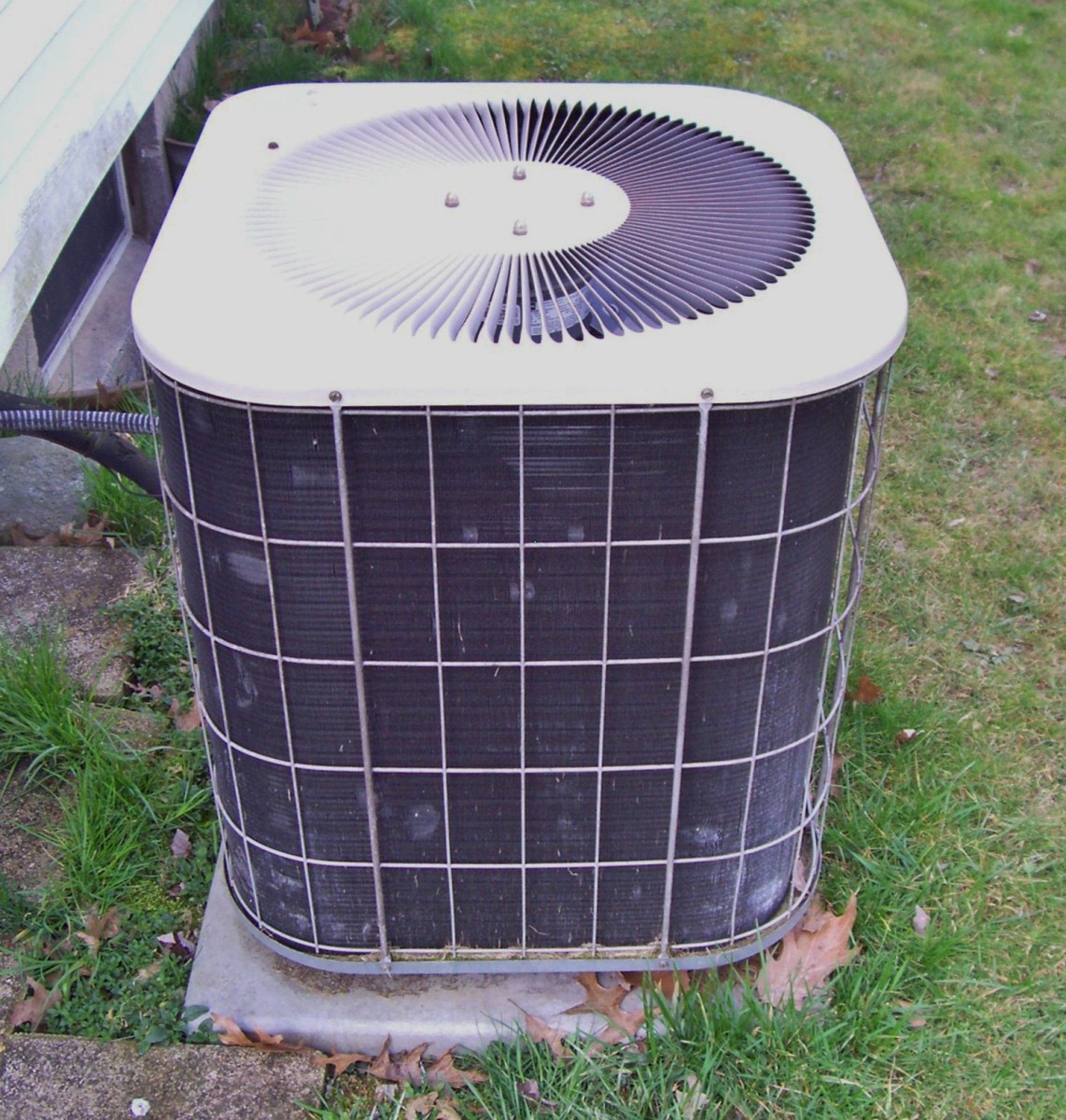
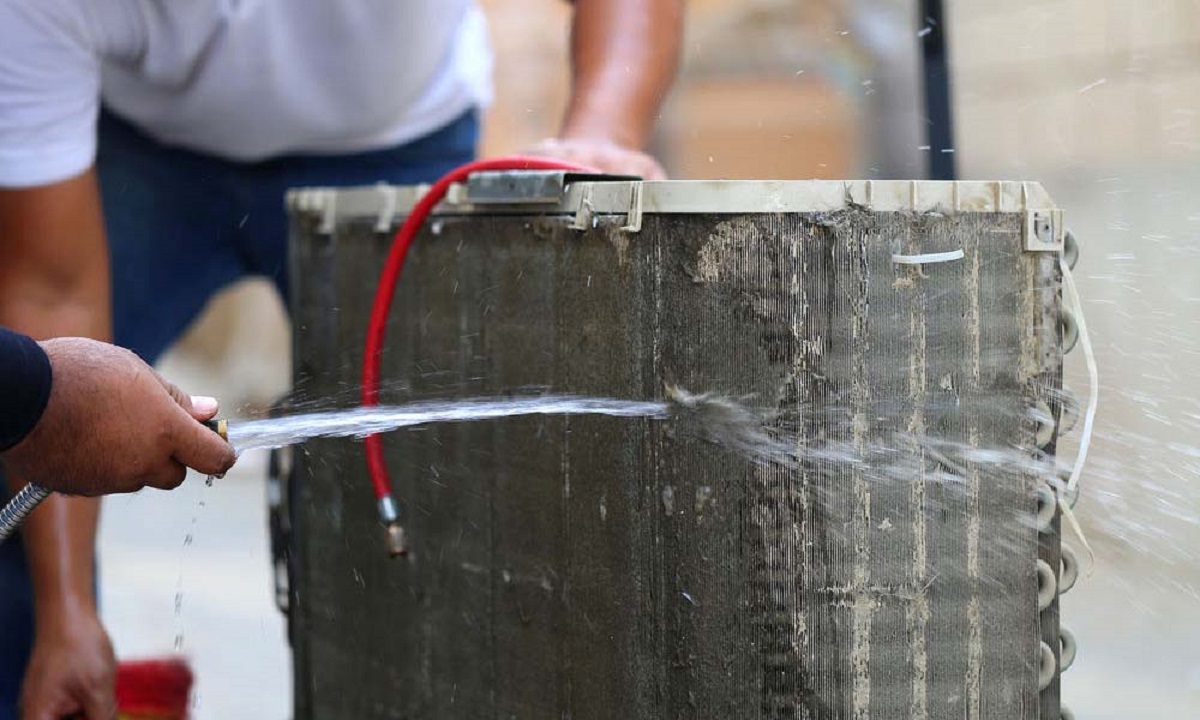
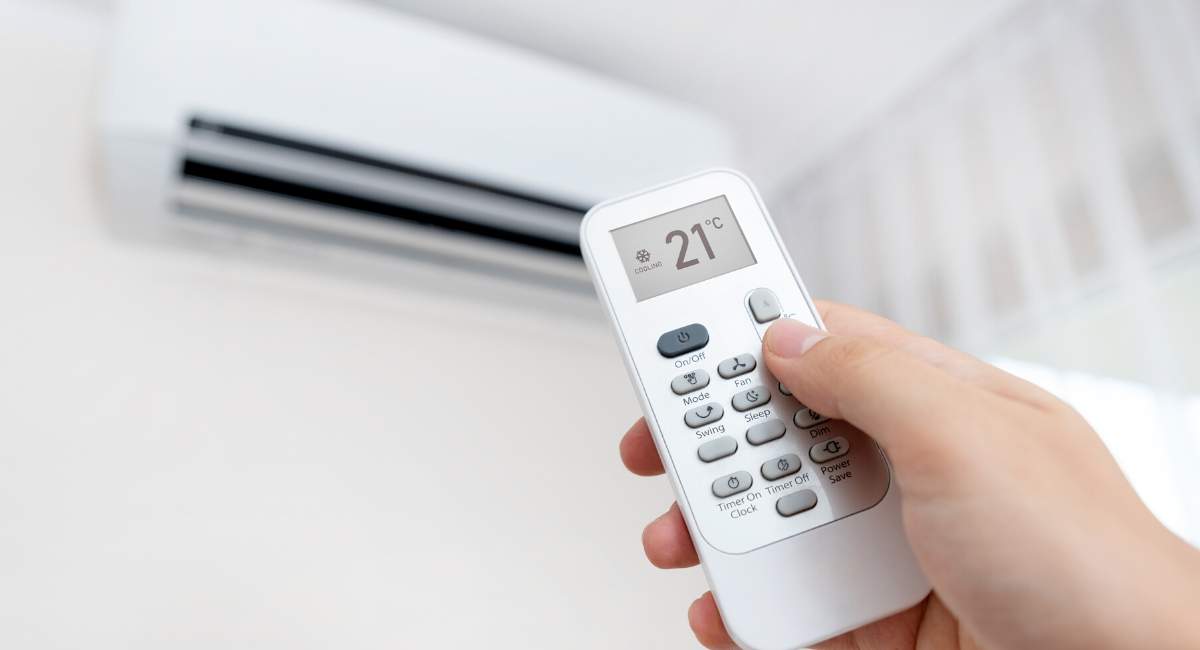
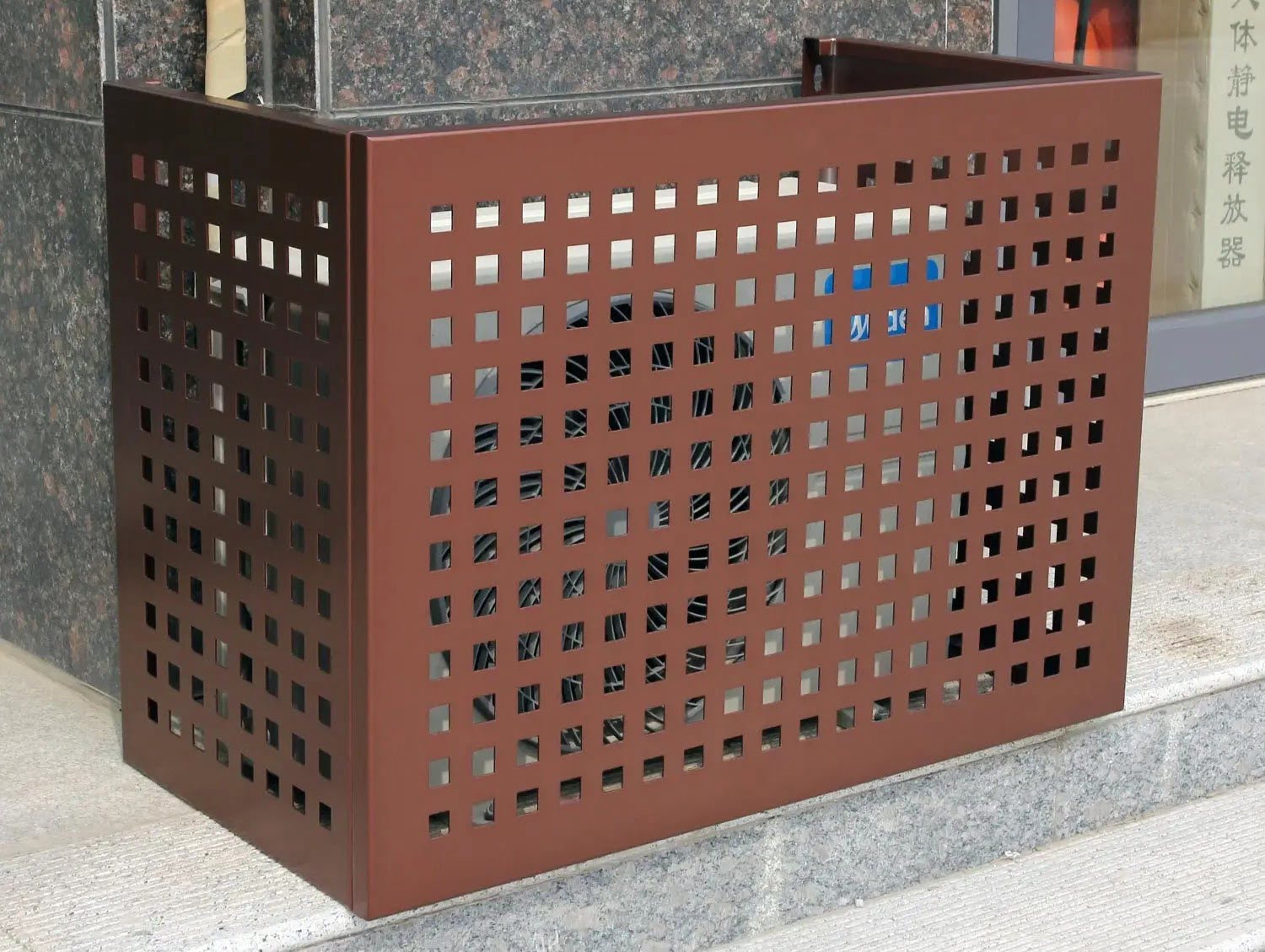
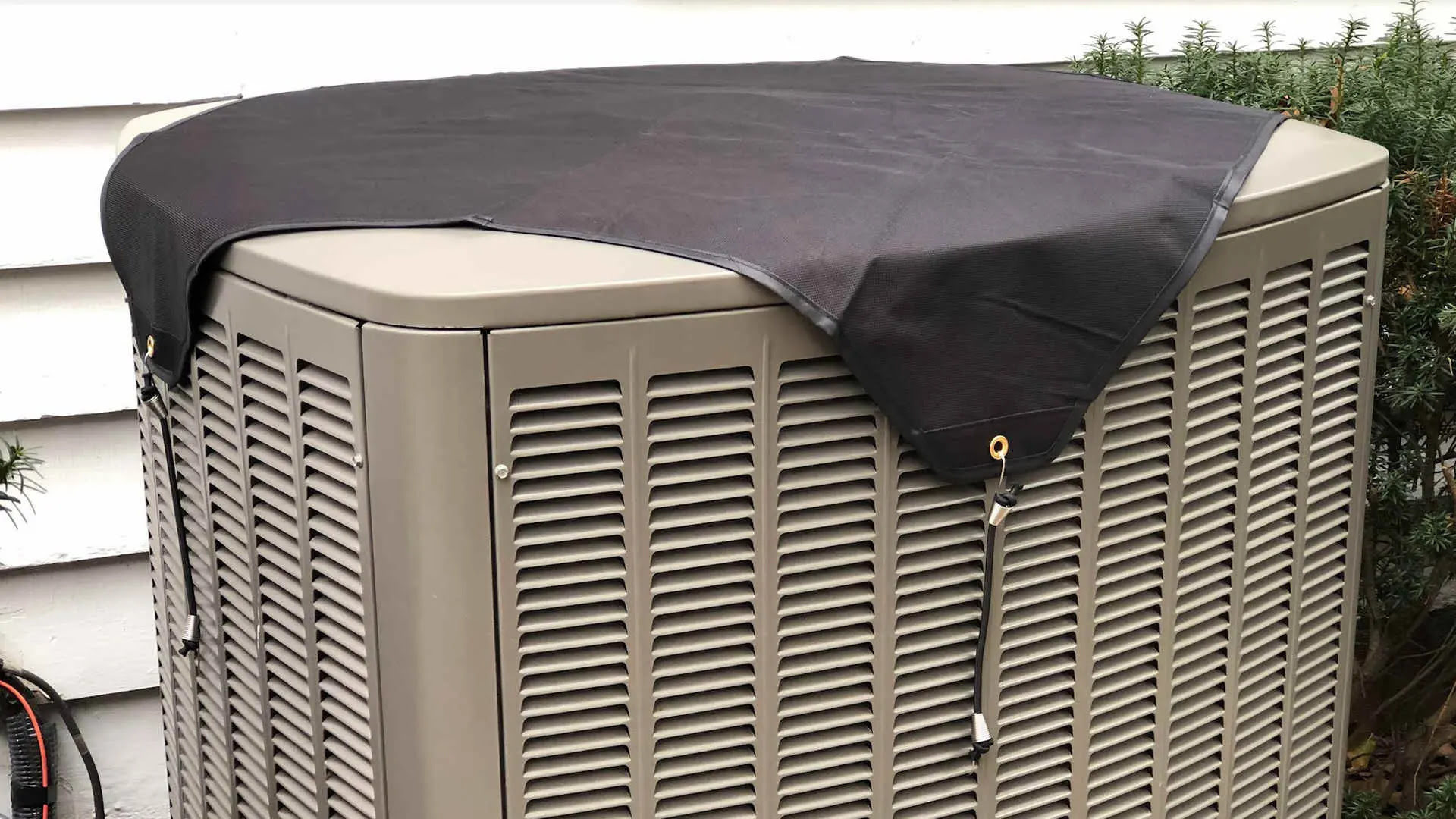
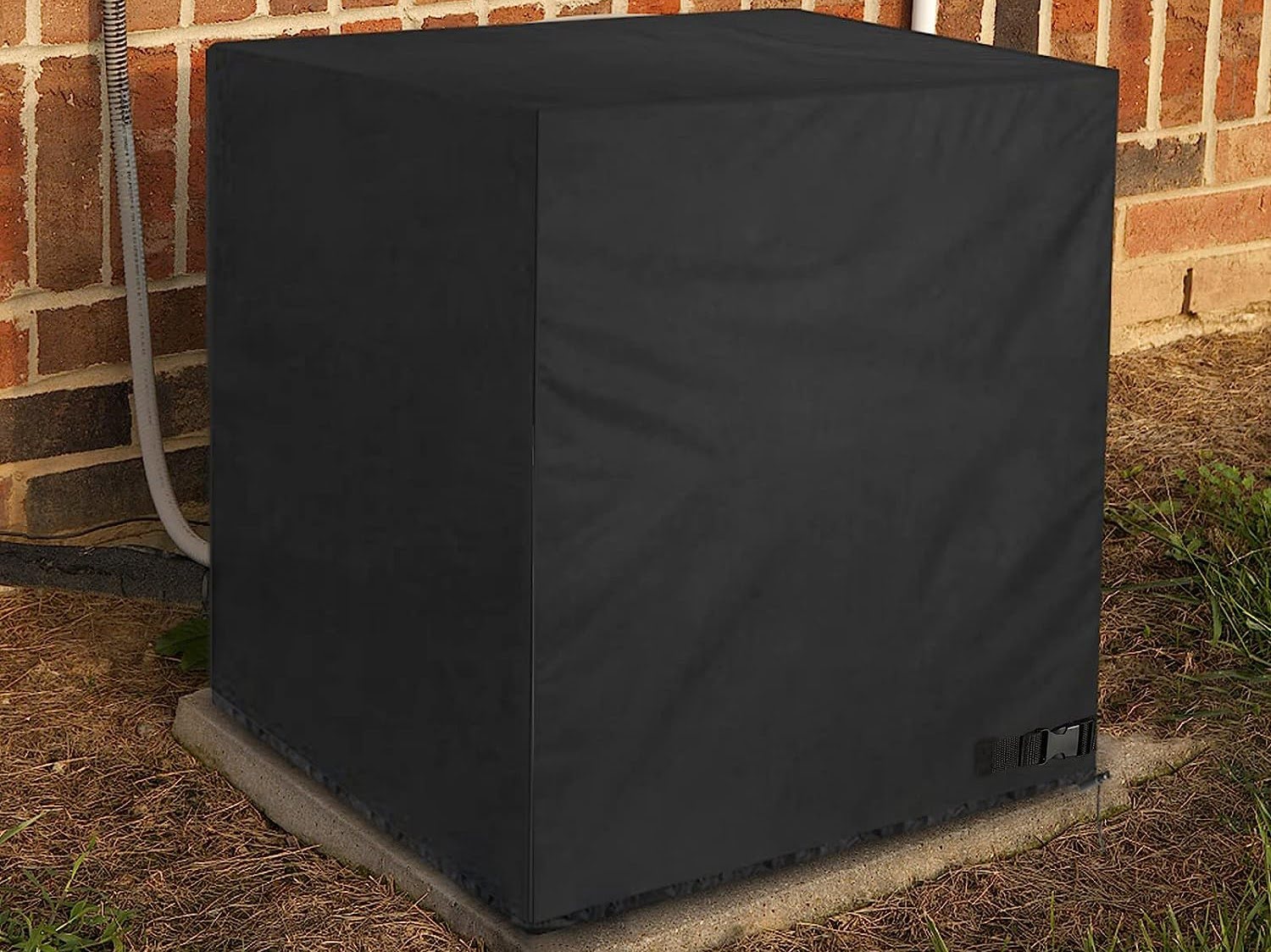
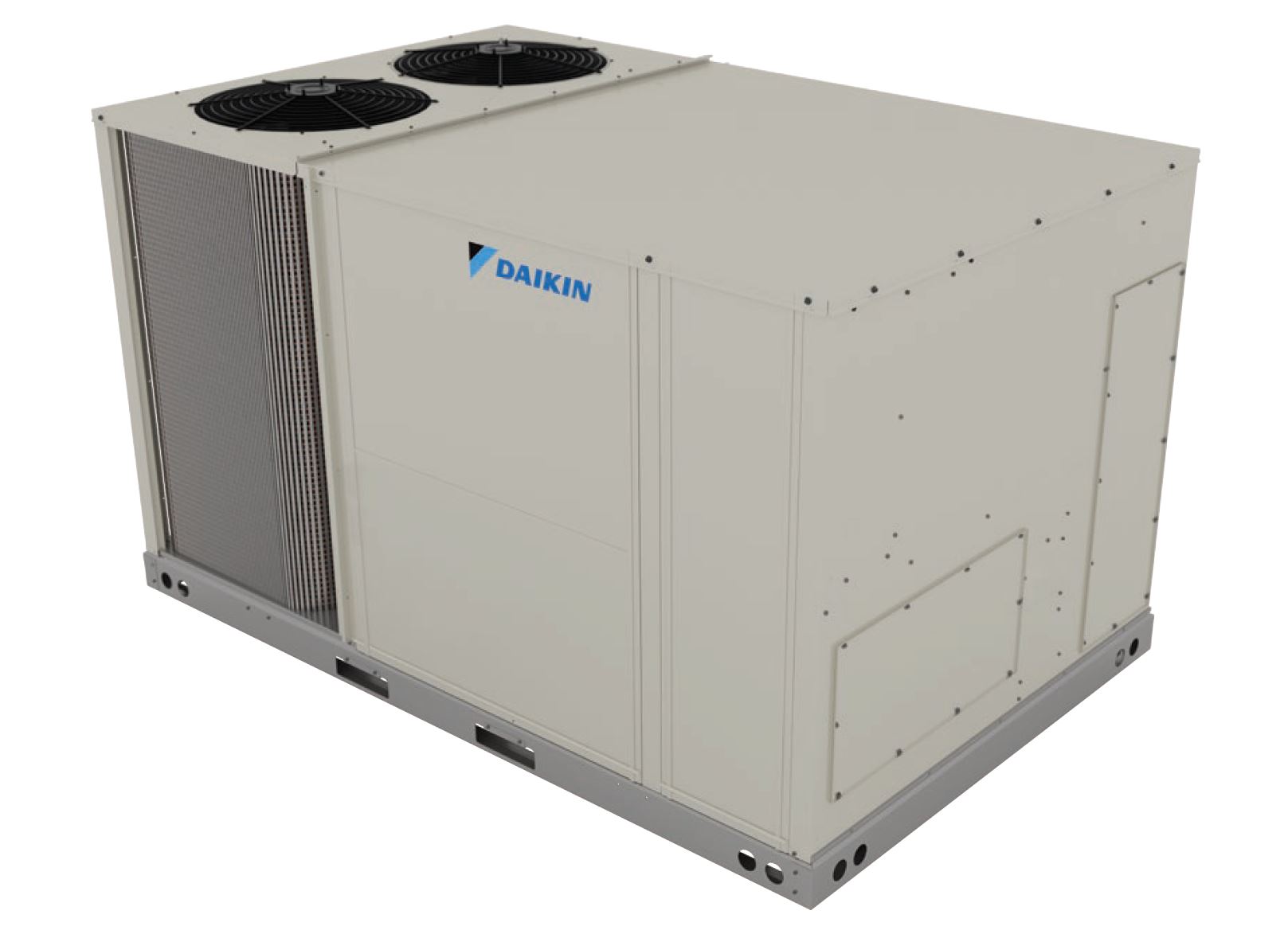

0 thoughts on “How To Hide HVAC Unit Outside”